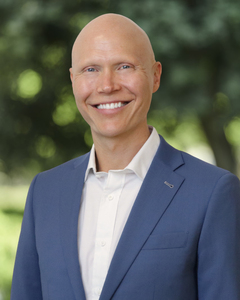How High-Trust Teams Future-Proof Organizations


In an era of relentless innovation and constant disruption, building trust within teams isn’t just a soft skill for organizations; it’s a strategic imperative.
Zach Smith, the chief activation officer at Activate 180, led participants through a thought-provoking exercise at From Day One’s March virtual conference, asking them to cross their arms “naturally” and “unnaturally” to underscore a fundamental truth about human behavior: Our brains are wired to resist change.
The exercise’s goal was to remind the audience they would always revert to how they usually crossed their arms, regardless of how many times he made them do it unnaturally.
“We naturally revert to what’s familiar—it’s the mere exposure effect,” Smith said. “But in a world where change is exponential, clinging to defaults can stifle growth.”
Smith discussed how organizations can tackle this natural resistance to change by fostering high-trust environments as workplaces face unprecedented disruptions.
The Neuroscience Behind our Resistance to Change
Humans see change through a primal lens. It’s either a threat or an opportunity. “Our ancestors survived by treating unfamiliar shifts—new predators, scarce resources—as threats,” Smith said. “Today, that same instinct triggers survival mode in workplaces, limiting innovation.”

This neurological preference to stick to the familiar often leads to suboptimal decision-making, from clinging to outdated practices to avoiding transformative technologies.
Being resistant to change is not a viable strategy for organizations in today’s competitive landscape that’s regularly being disrupted by new technologies. Futurist Ray Kurzweil, whom Smith cited, famously predicted that the 21st century would bring 20,000 years of progress. Kurzweil’s predictions have been startlingly accurate from smartphones to artificial intelligence.
“If we’ve seen this much upheaval since 2000, imagine the next decade,” Smith said. “Leaders must rewire teams to see change as an opportunity—not a threat.”
The High Cost of Low Trust
Gallup’s 2024 data paints a grim picture as employee engagement hit an 11-year low, with more than 50% of workers eyeing new roles. Smith says that low trust within organizations is responsible for this lack of engagement. “When trust is lacking, communication breaks down. Silos form. People disengage or leave,” Smith said.
In contrast, high-trust teams are considerably better at adapting to change. Dr. Paul J. Zak’s study of thousands of organizations found that high-trust teams:
Practical Steps Forward
Zach’s insights weren’t just theoretical; he provided actionable strategies for leaders looking to transform their organization’s culture.
First, introduce new processes and ideas slowly. Run low-stake experiments regularly that allow team members to familiarize themselves with new processes and ideas gradually. “Just as you can learn a new way to cross your arms, you can learn new ways to work together,” Smith advised.
Another important component is promoting transparency. Share successes and challenges candidly with team members, inviting input and fostering an environment where constructive dialogue flourishes. Smith says this openness helps to reduce the stress and anxiety caused by uncertainty.
“Trust isn’t abstract—it’s a competency,” Smith said. “It’s the ‘savings account’ you build through consistency. Withdrawals—like broken promises—cost more than deposits.”
During the conversation, Smith drew an unexpected analogy from nature to highlight the importance of high trust in organizations, explaining how Canadian geese use a “V” formation when flying to share leadership and reduce fatigue.
The V formation creates drag as it pierces through the air, leading to the goose at the head of the formation doing the most work while the geese at the tails do the least. This allows the birds to cover much longer distances than they could travel if the group stopped when the leader was tired.
“The front goose does the heaviest lifting, then rotates back to recover. It’s shared responsibility in action,” Smith said. Teams that emulate this model—where trust enables collaboration—achieve an “amplification effect,” outpacing competitors.
For Smith, systematic coaching is the key to developing a similar level of cooperation. “Trust isn’t just HR’s job. It requires intentional, organization-wide habits—like empowering employees to voice concerns without fear,” he added.
Building trust in an organization starts with small, consistent actions. Clarify expectations to reduce ambiguity. Delegate meaningful responsibilities to demonstrate confidence in team members’ abilities, and acknowledge everyone’s contributions to reinforce their value.
“Trust transforms employees from transactional workers to invested partners,” Smith said. In high-trust cultures, teams navigate change collaboratively, viewing challenges as shared missions rather than threats.
In Smith’s closing remarks, Kurzweil’s optimism about humanity’s adaptability resonated: “Curiosity and resilience will define successful organizations. Leaders who prioritize trust aren’t just preparing for the future, they’re shaping it.”
Editor’s note: From Day One thanks our partner, Activate 180, for sponsoring this thought leadership spotlight.
Ade Akin covers workplace wellness, HR trends, and digital health solutions.
(Photo by PeopleImages/iStock)
The From Day One Newsletter is a monthly roundup of articles, features, and editorials on innovative ways for companies to forge stronger relationships with their employees, customers, and communities.